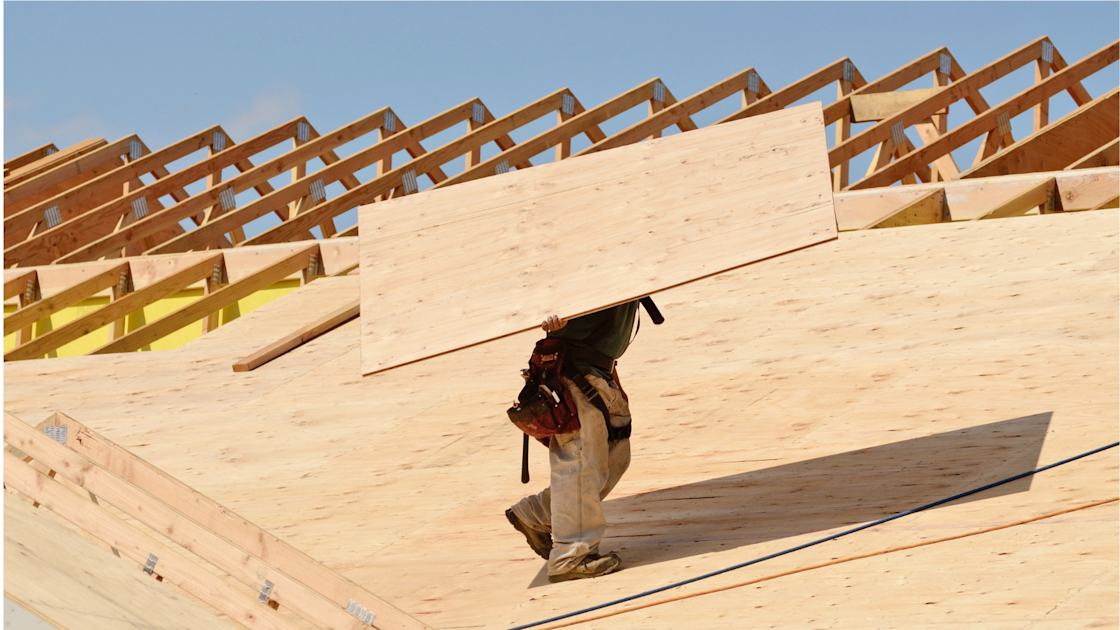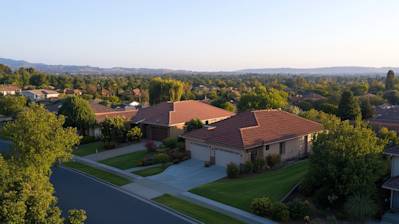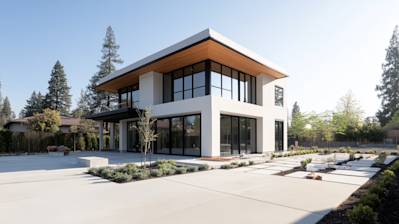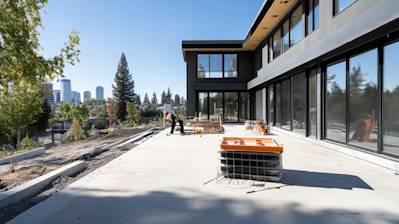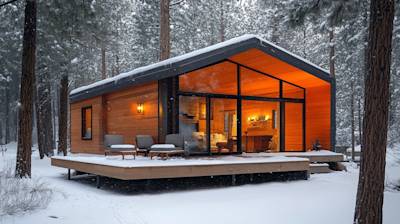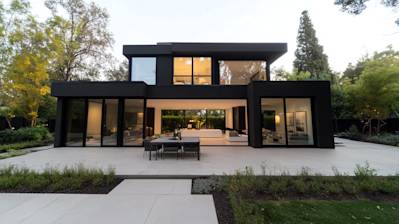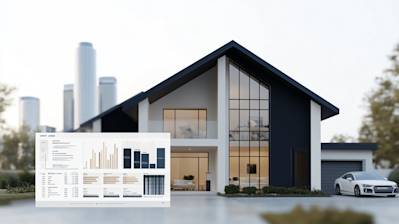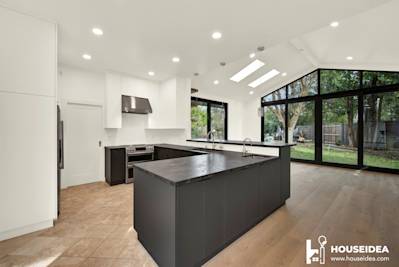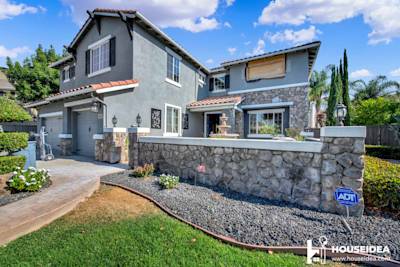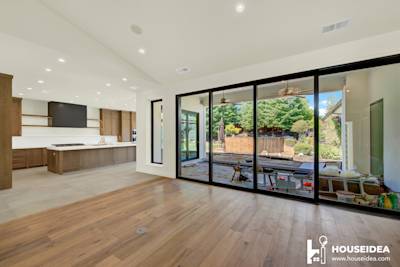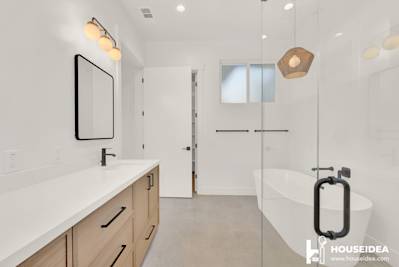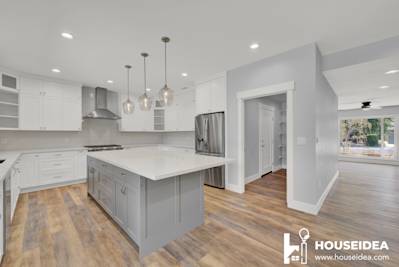When constructing or renovating a house, one of the most crucial areas to consider is the roof. Without a doubt, the roof serves as our first line of defense against extreme weather conditions, like rain, heat, and snow. As such, every part and detail of its construction must be taken into careful consideration - from the type of materials used to the method of application. An integral but often overlooked part of this process is the roof sheathing. It's time to shed light upon roof sheathing, highlighting its importance and understanding how it contributes to the overall strength and durability of your roof.
What is Roof Sheathing?
Roof sheathing, often referred to as roof decking, is the material that serves as a base for your roof cover. It provides structural support, enhances safety, and aids in insulation. Roof sheathing is a critical part of the roof system, bridging the gap between the roof's structural components and the final layer of roofing material.
The Role and Importance of Roof Sheathing
Sheathing is a true multitasking component in your roof structure. It plays various roles ranging from supporting the roof loads, providing a weatherproof barrier, acting as a structural diaphragm to enhance the building's rigidity, and providing a solid nailing surface for the final roof covering. The efficiency of your roofing system, hence, greatly depends on the quality and type of sheathing installed.
Selecting the Right Roof Sheathing
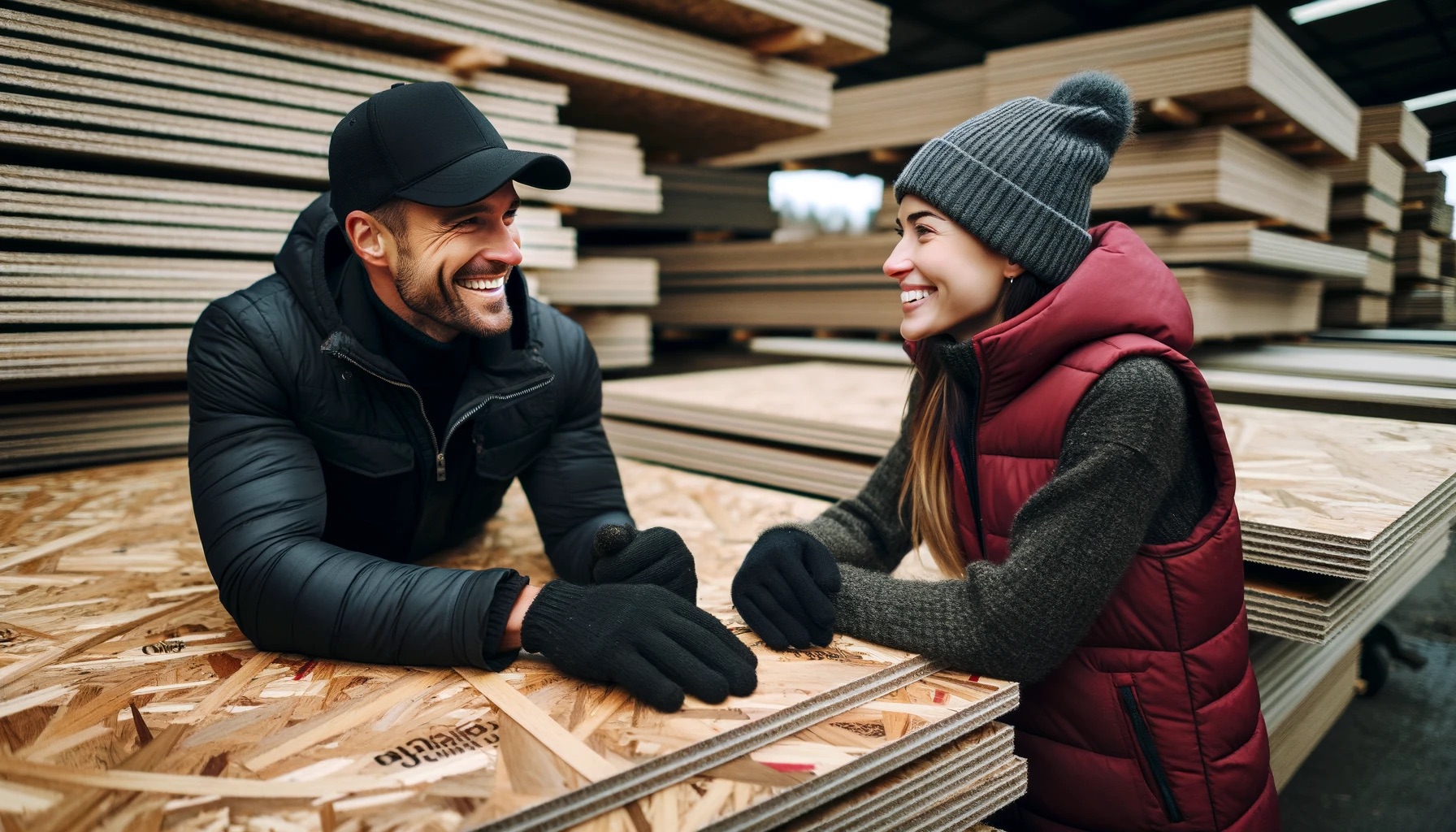
There's no one-size-fits-all when it comes to roof sheathing. Depending on the building codes, geography, and specific roof design, different types of sheathing can be used. The two most common types of roof sheathing are plywood and oriented strand board (OSB).
Plywood vs. Oriented Strand Board (OSB)
While both plywood and OSB are used for the same purpose, they have distinct differences:
- Plywood: It's a sturdy material made by glueing together thin layers of wood veneers. It's resistant to moisture and offers superior nail-holding ability.
- OSB: This consists of several layers of sliced wood strands that are pressed and bound together. It is more cost-effective than plywood but not as resistant to moisture and can warp over time.
Residential vs. Commercial Roof Sheathing
Residential and commercial roofs have different demands due to their varying sizes, designs, and purposes. Therefore, the type of roof sheathing used may vary.
Residential Roof Sheathing
In residential construction, plywood or OSB is typically used. These materials work well for homes as they provide excellent strength and durability. Plus, they can withstand the weight of typical residential roofing materials like asphalt shingles or metal roofing.
Commercial Roof Sheathing
Commercial structures, on the other hand, tend to demand more from their roof systems owing to larger building sizes and the need for longer-lasting durability. In this case, heavy-duty materials such as steel roof decking or concrete are some options that can withstand high loads.
Roof Sheathing Installation
Installing roof sheathing is a significant part of the roofing process, and it needs to be handled with precision. Errors in this stage can result in a multitude of problems down the road like leaks, structural issues, or even complete roofing system failure. Here are steps to follow for successful roof sheathing installation:
- Measure the area correctly and cut the sheathing to the required size.
- Make sure the surface where the sheathing will be attached is clean and dry.
- Attach the sheathing to the roof structure using appropriate fasteners, ensuring uniform spacing.
- Proceed with the installation of the rest of the roofing components.
Always remember that roof sheathing installation should align with local building codes and manufacturer's specifications for the best results.
Maintenance and Repair of Roof Sheathing
Like any other part of your home, roof sheathing requires routine check-ups and maintenance to maximize its lifespan. Cracks, water damage, and rot are common issues faced. A thorough inspection by a professional roofer can help detect these issues early and provide necessary repairs or replacement before they turn into bigger problems.
Roof sheathing is an integral part of your roofing system. Understanding its role and the different options available can guide you to make an informed decision about your roof construction or renovation project. Always consult a professional to ensure proper installation and maintenance of your roof sheathing, ultimately leading to a stronger and more durable roof.
Frequently Asked Questions about Roof Sheathing
How thick should my roof sheathing be?
The thickness of your roof sheathing can vary depending upon the type of your roof and the specific building codes in your region. Typically, the thickness can range between 7/16 inches to 3/4 of an inch.
How do I maintain my roof sheathing?
Routine inspection is key to maintaining your roof sheathing's performance and longevity. Watch out for signs of water damage, such as leaks or discoloration. If you notice any of these issues, it is recommended that professional help is sought for repair to avoid further harm to your roof's structure.
How do I know when to replace my roof sheathing?
If you notice significant signs of water damage, including rotting or warping, it's probably time to consider replacing your roof sheathing. Other indicators might include severe mold and mildew growth, as well as major leaks that can be attributed to faulty sheathing.
Can I install roof sheathing on my own?
While it's possible for a homeowner to install roof sheathing themselves, it can be a time-consuming and dangerous process without proper tools and expertise. Due to the risks involved with working on a roof, it's recommended that you hire a professional to ensure the job is done correctly and safely.
What is the cost for installing roof sheathing?
Several factors determine the cost of installing roof sheathing such as material type, the complexity of the job, labor cost in your area, and roof size. On average, one might expect to pay between $60 to $80 per sheet of plywood, with installation included.
How long does roof sheathing last?
Riding on maintenance and quality, roof sheathing usually lasts as long as the rest of the roof structure. This is typically between 20 to 30 years. However, any signs of damage should be addressed immediately to avoid compromising the sheathing's longevity.
Will roof sheathing improve my home's insulation?
While sheathing does provide a degree of insulation, its primary function is to support the shingles and protect your home from external elements. For improved insulation, you might want to consider including an appropriate layer of insulation material underneath your sheathing.
What should I consider when choosing roof sheathing?
When choosing roof sheathing, the factors to consider should include durability, cost, your area's building codes and the type of roof you have. It may be beneficial to consult with a roofing professional to ensure you're choosing the most suitable sheathing for your home.
Pros and Cons of Roof Sheathing
Pros of Roof Sheathing
Structural Integrity
Roof sheathing helps improve the overall structural integrity of a building. By attaching directly to the roof trusses, roof sheathing effectively ties the roof system together. This connection gives the home or building a greater resistance against wind and other extreme weather conditions.
Protection
- Weather Protection: Roof sheathing works as a barrier between the roof covering and the inside of your house, offering protection from snow, rain, ice, and even sun.
- Insulation: Depending on the materials used, roof sheathing can provide excellent insulation, helping to control the interior temperature and potentially lower energy costs.
Variety of Materials
Roof sheathing is available in a variety of materials, including plywood, oriented strand board (OSB), and fiberboard. This diversity in material choices enables homeowners or builders to choose the best sheathing for their specific needs and budget.
Ready for Roof Covering
Roof sheathing provides a surface for the application of shingles, metal roofing, or other roof coverings, effectively preparing it for finishing touches.
Cons of Roof Sheathing
Cost
Depending on the material chosen for roof sheathing, costs can add up quickly. For example, plywood is typically a more expensive choice for sheathing and will undoubtedly increase expenses.
Installation
- Time Consuming: Installation of roof sheathing can be time-consuming, which is especially problematic if the construction schedule is tight.
- Skill Required: Improper installation of roof sheathing can reduce its efficiency and even cause damages. Therefore, installing roof sheathing requires skilled labor, which may not always be readily available or affordable.
Maintenance
Roof sheathing requires regular maintenance to ensure it remains effective. Over time, roof sheathing materials can deteriorate due to exposure to harsh weather conditions, which can lead to leaks or even structural damage.
Vulnerability to Moisture and Pests
- Moisture: Without proper sealing and ventilation, roof sheathing can be vulnerable to moisture build-up, which can lead to mold growth and decay.
- Pests: Some sheathing materials can also be susceptible to pest infestation, which can slowly eat away at the board causing significant damage over time.
Material Limitations
Not every roof sheathing material is suitable for all types of roof coverings. For instance, asphalt shingles may not be compatible with certain kinds of sheathing, limiting the choices for roofing materials.
Summary
Roof sheathing plays an integral part in maintaining the strength and stability of our homes. It forms the base layer over which shingles or other finished roof products are applied, making it essential for effective roofing. With this structural support, our houses become more equipped to withstand harsh weather conditions and provide the comfort we need.
Choosing the right roof sheathing material can make a big difference to your home's durability. Materials like plywood and oriented strand board are popular choices due to their resistance to temperature changes and moisture. Remember that each material has its specific benefits, so always consider your specific needs and circumstances when choosing your roof sheathing.
Proper installation of roof sheathing is crucial. Improper installation could lead to damage and costly repairs in the long run, not to mention a compromised roof structure. Therefore, it's always a good idea to work with trusted professionals in this field. A solid roof sheathing not only ensures the long-term stability of your home but also your peace of mind.
About HouseIdea
Say hello to HouseIdea, the dream team from Sacramento, CA that's transforming the way you view design and home improvement. Passionate about decking out your pad to perfection? Or maybe you're just after a refresh? Our talented team doesn't just live and breathe design – we make it happen. Bringing an unmatched blend of innovation, creativity, and quality right to your doorstep, HouseIdea is all about helping you create a house that doesn't just feel like home, but feels like you.
Tags: roof sheathing, roof construction, roofing materials,

